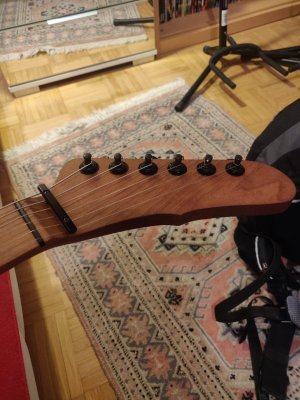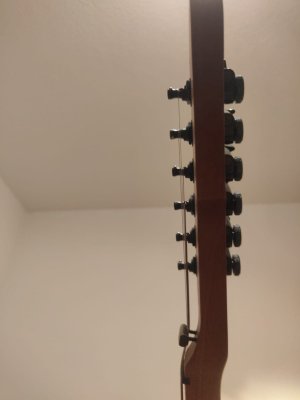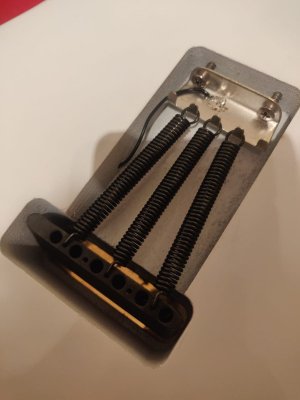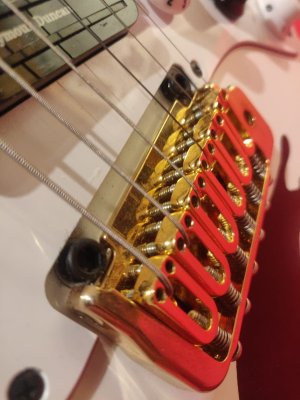alexreinhold
Senior Member
- Messages
- 739
Hi experts,
I recently completed my first build and it has largely been a success. Tone, playability and looks are simply amazing (couldn't have done it without this community!). However, there seems to be an issue with tuning stability of the G/B/High-E strings. Here are some infos:
- alder body
- roasted maple neck hockey stick headstock, Planet Waves locking tuners, retainer bar, TUSQ 1-11/16” nut
- hipshot contoured tremolo (decked, i.e. not floating)
- areas of friction on the tremolo, nut and retainer bar have been lubricated to the best of my abilities (not sure though since it's the first time I did it)
Attached you can find some pictures. One assumption I have is that the retainer bar might not be low enough on the G/B/High-E end - but it's just a wild guess.
I'm very curious if you could maybe help me pinpoint the problem or whether it's better to bring it to a guitar tech.
Best,
Alex
I recently completed my first build and it has largely been a success. Tone, playability and looks are simply amazing (couldn't have done it without this community!). However, there seems to be an issue with tuning stability of the G/B/High-E strings. Here are some infos:
- alder body
- roasted maple neck hockey stick headstock, Planet Waves locking tuners, retainer bar, TUSQ 1-11/16” nut
- hipshot contoured tremolo (decked, i.e. not floating)
- areas of friction on the tremolo, nut and retainer bar have been lubricated to the best of my abilities (not sure though since it's the first time I did it)
Attached you can find some pictures. One assumption I have is that the retainer bar might not be low enough on the G/B/High-E end - but it's just a wild guess.
I'm very curious if you could maybe help me pinpoint the problem or whether it's better to bring it to a guitar tech.
Best,
Alex






